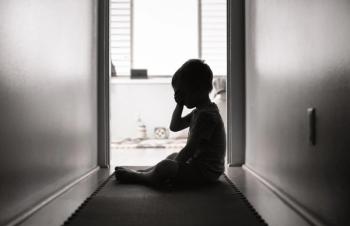
Posttraumatic stress after disaster doesn’t always lead to chronic symptoms
Natural disasters can cause extreme stress. An investigation examines the trajectories of posttraumatic stress following such disasters.
Childhood is usually a period of learning and exploring, with little chance of extreme stress. However, some children will face a natural disaster such as a hurricane, earthquake, or tornado, and these events can lead to the development of posttraumatic stress symptoms. A
The researchers used integrative date analysis that looked at 4 studies that examined the response to 4 hurricanes: Andrew, Charley, Ike, and Katrina. The studies were conducted from 3 to 26 months after the hurricanes occurred. Each study recruited children and teenagers aged 6 to 16 years who attended schools that were near the path of destruction of the hurricane. The University of California, Los Angeles, Posttraumatic Stress Disorder Reaction Index (UCLA PTSD-RI) and the UCLA PTSD-RI-Revised was used to assess posttraumatic stress symptoms.
A total of 1707 children and adolescents with an average age of 9.61 years were included in the study. A total of 4 trajectories for posttraumatic symptoms were noted:
- Chronic – 171 participants
- Recovery – 393 participants
- Moderate-stable – 563 participants
- Low-decreasing – 580 participants
Older teenagers were less likely to be in the chronic group than their younger peers and each 1-year increase in age was linked to increased odds of being in one of the other groups (recovery: odds ratio [OR], 1.78 [95% CI, 1.29-2.48]; moderate-stable: OR, 1.94 [95% CI, 1.43-2.62]; and low-decreasing: OR, 2.71 [95% CI, 1.99-3.71]). When compared to their male peers, girls were found to have higher odds of being in the chronic group than in any other group (recovery group: OR, 0.48 [95% CI, 0.26-0.91]; moderate-stable group: OR, 0.37 [95% CI, 0.21-0.64]; and low-decreasing group: OR, 0.25 [95% CI, 0.14-0.44]).
The results of the study are good news for clinicians who provide care for children and teenagers who are impacted by a natural disaster. A high number of children in the study were either in recovery or low-decreasing for posttraumatic symptoms than had chronic symptoms. Additionally, older age and being male appeared to decrease the risk of a chronic trajectory. Younger children, girls, or the children illustrating moderate-stable or chronic trajectories could benefit from further intervention.
Reference
1. Lai B, La Greca A, Brincks A et al. Trajectories of posttraumatic stress in youths after natural disasters. JAMA Netw Open. 2021;4(2):e2036682. doi:10.1001/jamanetworkopen.2020.36682
Newsletter
Access practical, evidence-based guidance to support better care for our youngest patients. Join our email list for the latest clinical updates.










